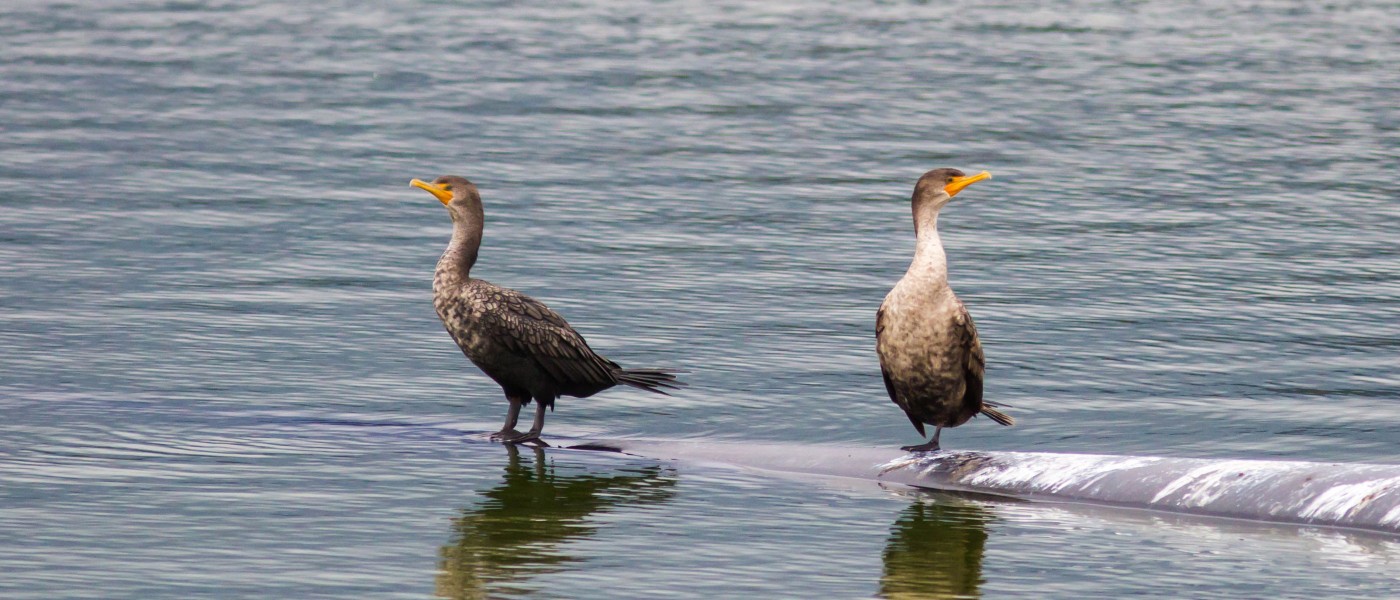Birds of Brooklyn: Double-Crested Cormorant
The double-crested cormorant is all over the place—the lake in Prospect Park, the Central Park Reservoir, and sometimes the Japanese Hill-and-Pond Garden at Brooklyn Botanic Garden. This large black waterbird is one of the most common birds in the New York City area, and it’s often seen near bodies of water—both large and small, freshwater and saltwater—perching on rocks and small trees spreading its wings out to dry. An excellent fisherman, the double-crested cormorant's diet consists almost entirely of fish.
This web-footed bird can dive deep. Unlike ducks, which have slick, oily feathers that allow water to bead and roll off their backs, the cormorant has little preen oil. This means water soaks into its feathers. The advantage of this is that the soaked bird is heavier and thus able to dive quite deep in pursuit of fish. The disadvantage is that wet feathers make flying difficult, which is why you’ll see cormorants constantly spreading their wings out to dry.
Some people regard double-crested cormorants as big and ugly, but there is actually a lot to appreciate about their looks. They have bright, yellow-orange skin in the facial area that sets off their beautiful aquamarine eyes. In breeding season the bird shows its double crests which are usually dark, though on the West Coast, especially Alaska, they can be white.
The double-crested cormorant is a colonial nester, unlike most of our area's backyard birds which are solitary nesters. They generally nest well north of the city, but there is a colony on U Thant Island in the East River. Their nests, usually made of sticks, and lined with grass, are found on the ground, on rocks and in trees, though accumulations of the birds' acidic guano usually kills the trees that the nests are in. (U Thant Island looks almost all white because of the guano!) Cormorants have been known to feed socially as well. I have seen them form large groups and work together to herd the fish and then feast on their catch. Teamwork at its best.
Similar birds, like loons, have a slightly different profile when in the water, but can be confused with cormorants from distance. One thing to look for is that the cormorant likes to have its bill slightly tilted upward while the common loon’s bill is usually straight and parallel to the water. The cormorant also has a slight hook on its bill while the loon does not. One of the thrills of birding is going into the field armed with knowledge like this so you can really look closely at a bird and say “Oh, yes, I know all about you.”
The Birds of Brooklyn series looks at some of the most familiar and fascinating birds that call Kings County their habitat.


